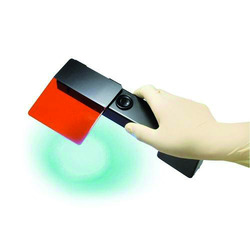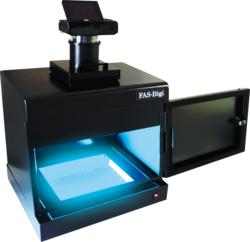- Main Page
- Products
- Products
- PCR Products
- Nucleic Acid Purification
- DNA/RNA Electrophoresis
- Protein Electrophoresis
- Imaging
- Cell Biology
- Laboratory Instruments
- Laboratory Plastic
- Technology
- Company
- News
- Distributors
-
- Main Page
- Products
- Imaging
- Transilluminators
- Blue/Green LED Transilluminator
-
Excitation of red and green dyes
-
No DNA degradation
-
Much safer for the user
-
Long LED bulb life
-
Energy saving light source
-
Available with amber filter screen
The use of UV transilluminators for the detection of DNA or RNA in agarose gels, is still very common, although we know quite well that the shorter the wavelenght is, the more the DNA will be damaged quickly, which is dangerous especially if the separated DNA should be used in downstream experiments like cloning or sequencing. Just seconds of UV light are enough to reduce the cloning efficiency significantly.
In contrast to UV instruments, the new innovative LED technology is using a much higher wavelenght, means energy less light. This will lead to the fact that the nucleic acids are not damaged but sometimes sensitivity is lower as compared to UV light. Furthermore regular BLUE LED technology is working well with green dyes but couldn't be recommended with red dyes like Ethidium Bromide, because the longer wavelenght is favorable for green dyes but not for red components.
To solve these problems, Nippon Genetics developed a brand new LED technology which is unique in the world so far. We have developed a so called BLUE/GREEN LED technology and we found out that this technology shows superior sensitivity with green and red dyes.
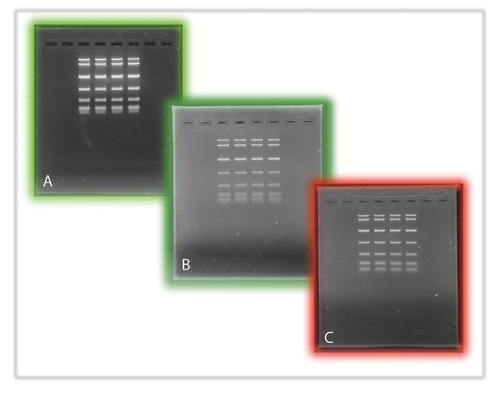
The Image shows the results obtained with the FastGene Blue/Green Transilluminator. for a complete comparison with UV light click comparison of DNA dyes
The FastGene® Blue/Green LED Transilluminator comes with an amber goggle, which filters the blue backlight efficiently. If you want to use gel documentation system you should check if your filters is working properly. In our experience any filter for green dyes are working fine, but if you having problems you can contact us and we will try to offer an appropriate filter.
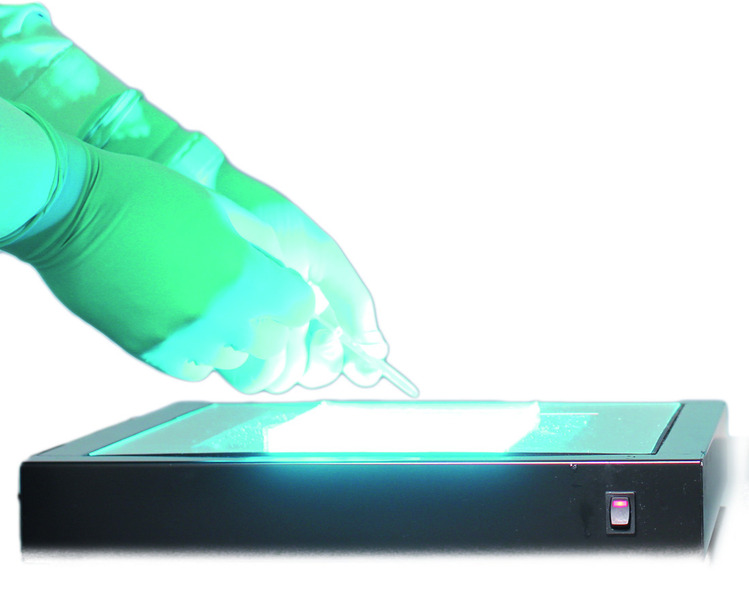
The FastGene® Blue/Green LED Transilluminator combined with an amber filter goggle or an amber filter screen enables an easy removal of bands from agarose gels.
DNA marker were separated on a 1,5 % agarose gel and stained with Midori Green Direct, Midori Green Advance or ethidium bromide (EtBr, red). Visualization was performed by using the new FastGene® Blue/Green LED Transilluminator as well as a regular UV transilluminator (302 nm).
Result
The FastGene® Blue/Green LED Transilluminator can detect DNA separated on a gel without loss of sensitivity. Even red dyes can be used without any problem. In conclusion, the best sensitivity can be achieved by using Midori Green Direct and the FastGene® Blue/Green Transiluminator.
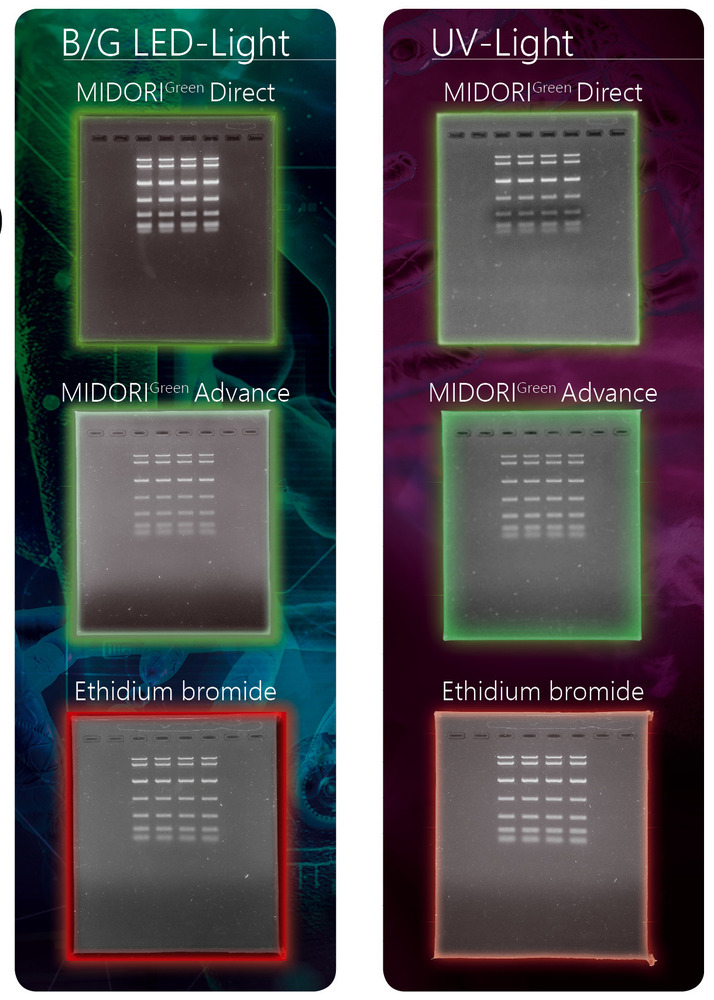
| Dimension | 340 x 270 x 50 mm |
| Weight | 2,9 kg |
| Work area | 200 x 160 mm |
| Wavelenght LED's | 480-530 nm |
| LED position | on side, below working area |
| Accesories included | 1x FastGene® Amber Goggle |
"Sharp and clear observable bands, which are easy to cut out.
No damage of the DNA bands by the UV-light and thus also safe for the user.
Best detection with Midori Green."
Technical assistant, University Freiburg, Institute for experimental and clinical pharmacology and toxicology
"We acquired a Blue/Green LED Transilluminator in order to avoid DNA damage by UV-light. Additionally, we can entirely concentrate on our work instead of paying attention not to harm ourselves e.g. if our lab coat sleeves ride up. The images of ethidium bromide labeled bands are as intensive as visualized with UV-light, so we also use the transilluminator for gel documentation."
N.Horst of University Freiburg, plant biotechnology
Nippon Genetics proudly presents the revolutionary Blue/Green LED technology. With this technology the signal intensity is higher than with UV-light (see comparison data). Additionally, red dyes, such as Ethdium Bromide and GelRed™, are excitable as well.
• Excitation of red and green dyes
• No DNA degradation
• Much safer for the user
• Long LED bulb life
• Energy saving light source
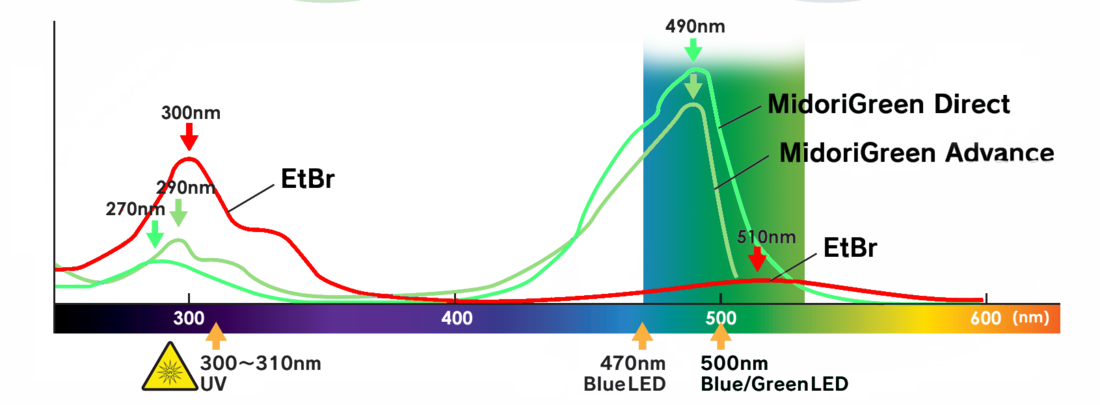
| Cat. No. | Product | Content |
| FG-08 | FastGene® Blue/Green LED Transilluminator | Transilluminator, amber goggles. |
| FAS-DGOF | Amber filter screen | Amber filter for FG-08 for easy observation and cutting of DNA bands with comfortable magnetic fixation |
| Datei | Beschreibung | Link |
|---|---|---|
| Manual | Manual of the Blue/Green LED Transilluminator | Download |
| Datei | Beschreibung | Link |
|---|---|---|
| Application Note | Influences of UV-light on the cloning efficiencies | Download |

